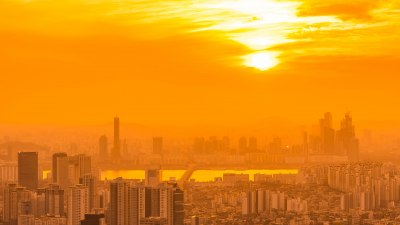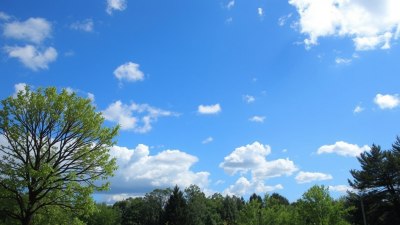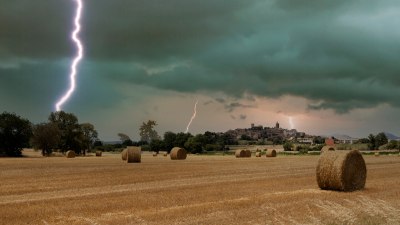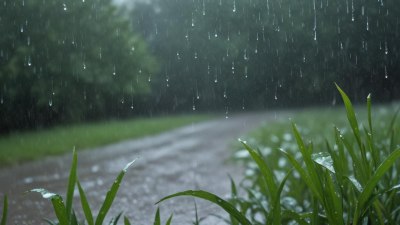What Causes Heatwaves to Last Longer
Explore the factors contributing to prolonged heatwaves, their effects, and potential solutions.

Image by lifeforstock on Freepik
Heatwaves are defined as prolonged periods of excessively hot weather, which may be accompanied by high humidity. Understanding why heatwaves last longer is essential, as it helps us address the impacts on health, agriculture, and energy consumption. In this article, we’ll delve into various factors that contribute to the durability of heatwaves, including climate change, atmospheric conditions, and urbanization.
What is a Heatwave?
A heatwave is typically characterized by temperatures that are significantly higher than average for a given area during a specific time of year. The World Meteorological Organization defines a heatwave as a period of at least five consecutive days where the temperature exceeds a certain threshold. The threshold varies based on regional climate norms, which means that what could be a heatwave in one area may not necessarily apply to another.
The Role of Climate Change
One of the most significant contributors to the increasing longevity of heatwaves is climate change. As greenhouse gas emissions rise, the atmosphere retains more heat, leading to an increase in average global temperatures. This warming results in more frequent and intense heatwaves. Scientists have noted that the duration of heatwaves has increased alongside rising temperatures. In many regions, the number of heatwave days has doubled compared to the previous century.
Changes in Atmospheric Patterns
Heatwaves are often associated with specific atmospheric patterns, including high-pressure systems. These systems can become stagnant, leading to prolonged periods of heat. When a high-pressure system establishes itself over a region, it can trap heat and inhibit the movement of cooler air, contributing to extended heatwaves. Additionally, phenomena like El Niño or La Niña can influence atmospheric circulation and lead to extreme weather patterns, including more prolonged heat events.
Urban Heat Islands
Urbanization plays a pivotal role in the intensity and duration of heatwaves. As cities grow, they create 'urban heat islands' where temperatures can be significantly higher than in surrounding rural areas. This phenomenon occurs due to the asphalt, concrete, and buildings absorbing and radiating heat. Urban areas tend to have less vegetation, which diminishes natural cooling effects like shade and evapotranspiration. As a result, cities may experience longer-lasting heatwaves compared to less developed areas.
Soil Moisture and Drought Conditions
Soil moisture levels greatly influence temperature and heatwave duration. Dry soil can absorb less heat, causing land areas to experience greater temperature extremes. When regions suffer from drought, the lack of moisture not only raises temperatures but can also prolong the heatwave duration by preventing cooling rains. This can create a vicious cycle as increased temperatures and prolonged heat can lead to further drying of soil, thereby intensifying the heatwave.
Feedback Mechanisms
There are various feedback mechanisms that can prolong heatwaves. For example, high temperatures can lead to increased energy demand for cooling purposes, which can worsen air quality. Poor air quality, in turn, can contribute to health problems and further demand for cooling, prolonging the heatwave's impact. In addition, wildfires that often accompany heatwaves can release large amounts of carbon dioxide and particulates into the atmosphere, exacerbating the greenhouse effect and fostering an even warmer climate.
Ecological Impacts
Heatwaves have significant ecological impacts that can last long after the heat recedes. Many plant species are sensitive to temperature changes; prolonged heat can induce stress and lead to crop failures, impacting food supply. Animals, too, feel the strain as heat can alter their habitats and make them less accessible or hospitable. These ecological ramifications can create complex challenges within ecosystems, leading to long-term biodiversity loss and disruptions.
Health Risks Associated with Prolonged Heatwaves
The health risks associated with longer-lasting heatwaves are profound, particularly for vulnerable populations such as the elderly and those with pre-existing health conditions. Prolonged exposure to high temperatures can lead to heat-related illnesses, dehydration, and increased mortality rates. Governments often need to enact emergency measures to protect public health, including opening cooling centers and issuing health alerts. These measures, however, require significant resources and coordination.
Strategies for Mitigating Heatwave Duration
Mitigating the effects of heatwaves involves both short-term strategies and long-term solutions. On an individual level, people can take precautions such as staying hydrated, avoiding outdoor activities during peak heat, and using fans or air conditioning. On a broader scale, communities can adopt urban planning strategies that include increasing green spaces and improving buildings’ energy efficiency. Implementing policies to reduce greenhouse gas emissions will also play a crucial role in combating climate change, which is a significant driver of longer-lasting heatwaves.
Adaptation and Resilience
Adaptation strategies can help communities better cope with the increasing frequency and duration of heatwaves. This can include improving infrastructure, investing in water management systems, and developing early warning systems to alert residents of high heat events. Resilience planning also involves educating communities on the health risks associated with extreme heat and encouraging behavior changes that mitigate those risks.
Understanding the causes of longer-lasting heatwaves is vital for developing effective responses. Climate change, atmospheric conditions, urbanization, and soil moisture are all interconnected factors that contribute to the persistence of heatwaves. By acknowledging these issues and implementing effective strategies, we can better prepare ourselves to deal with the challenges posed by prolonged periods of excessive heat. Awareness and proactive measures will contribute significantly to mitigating the impacts of heatwaves on human health and the environment.











